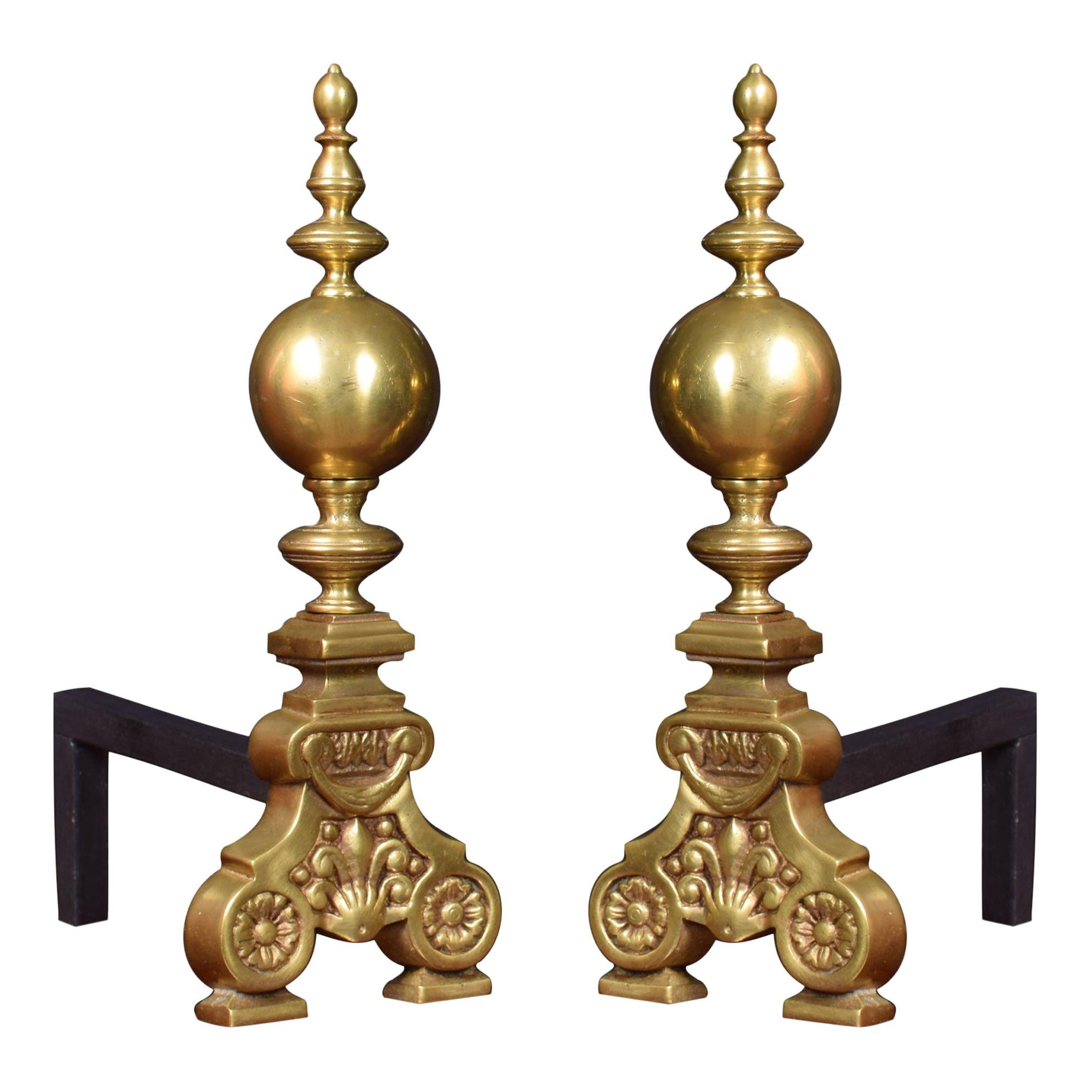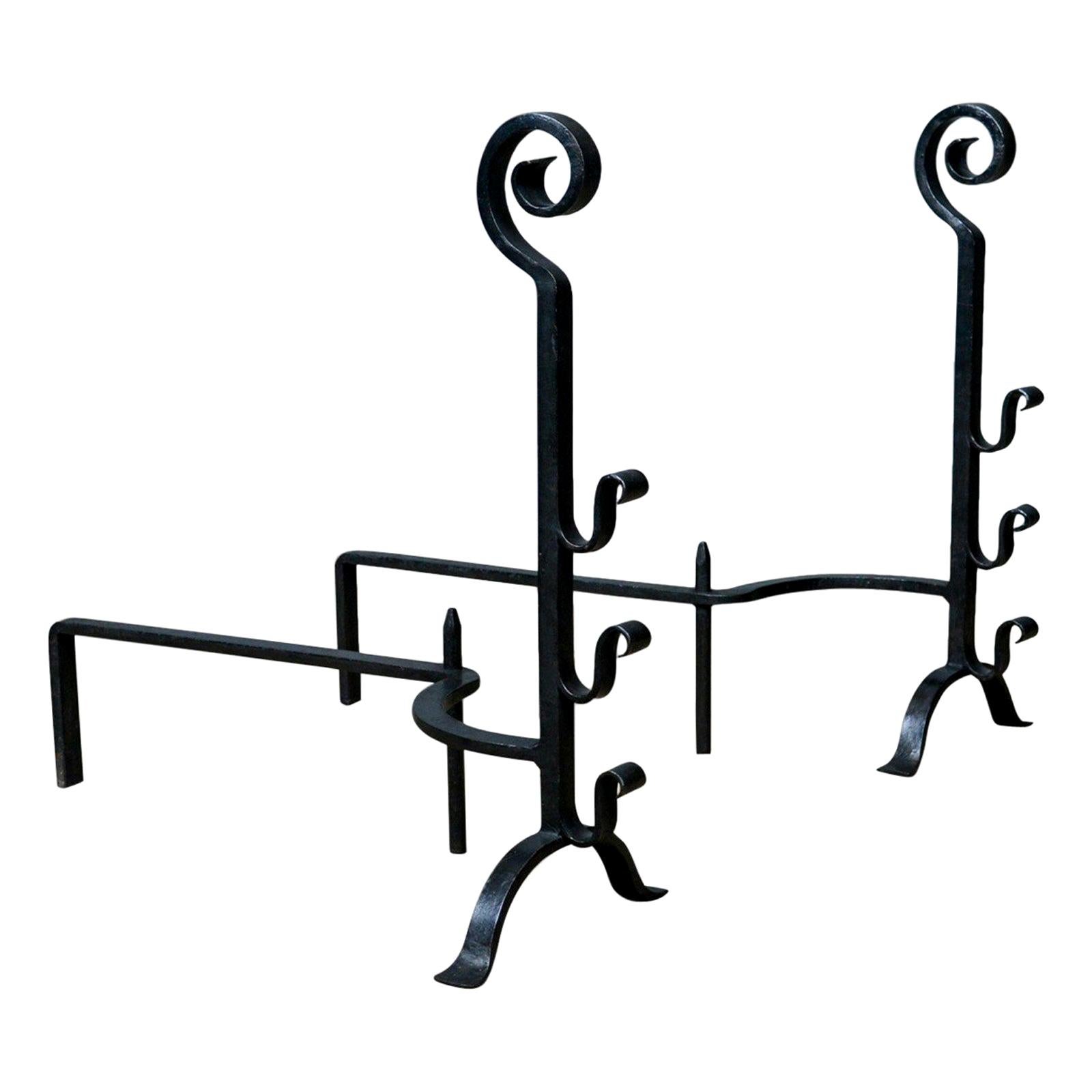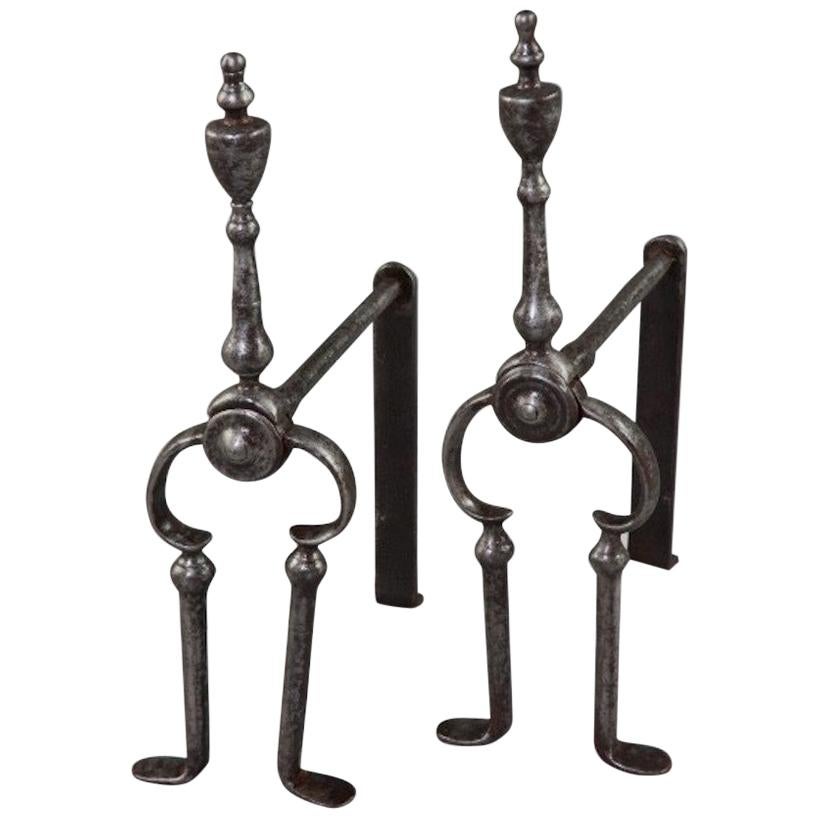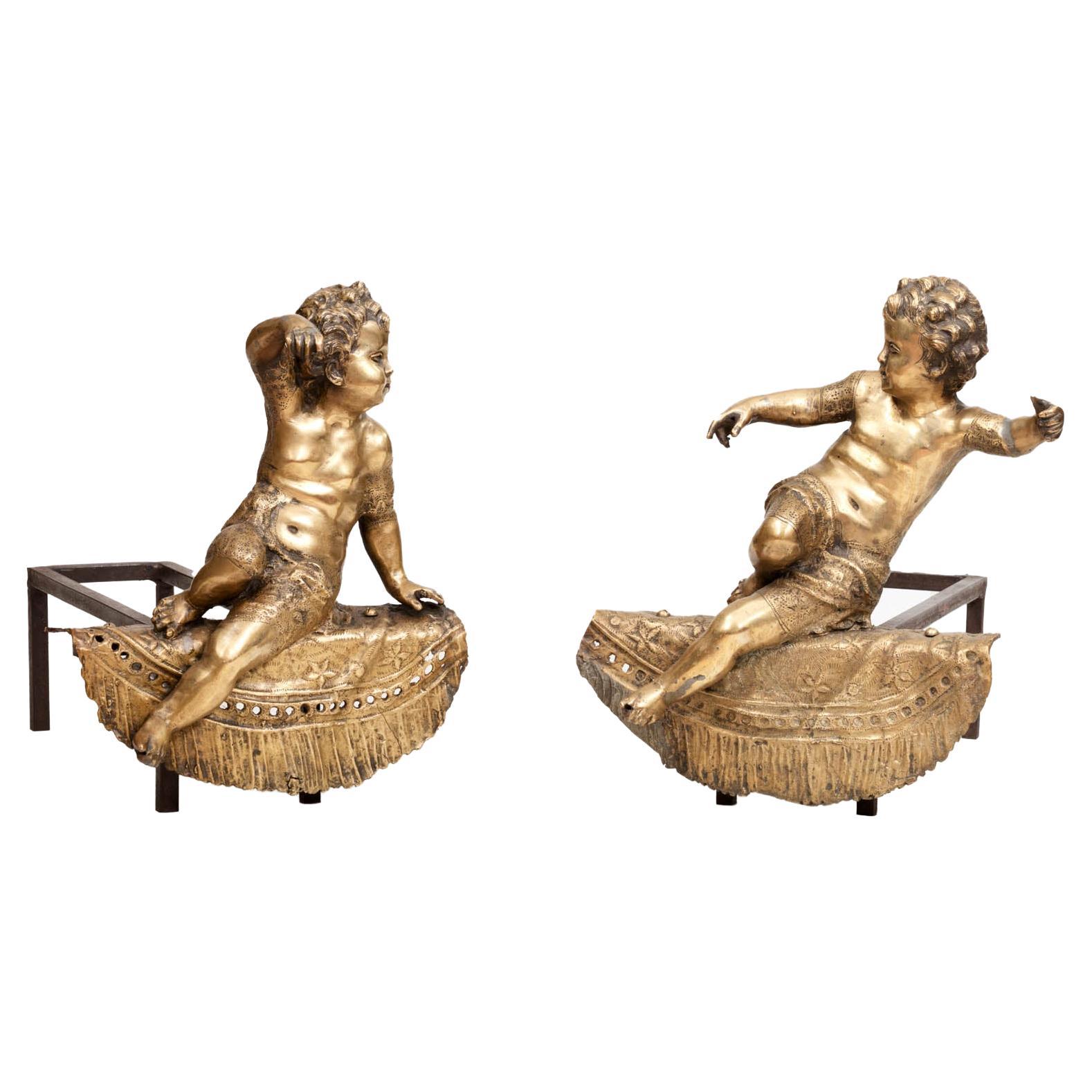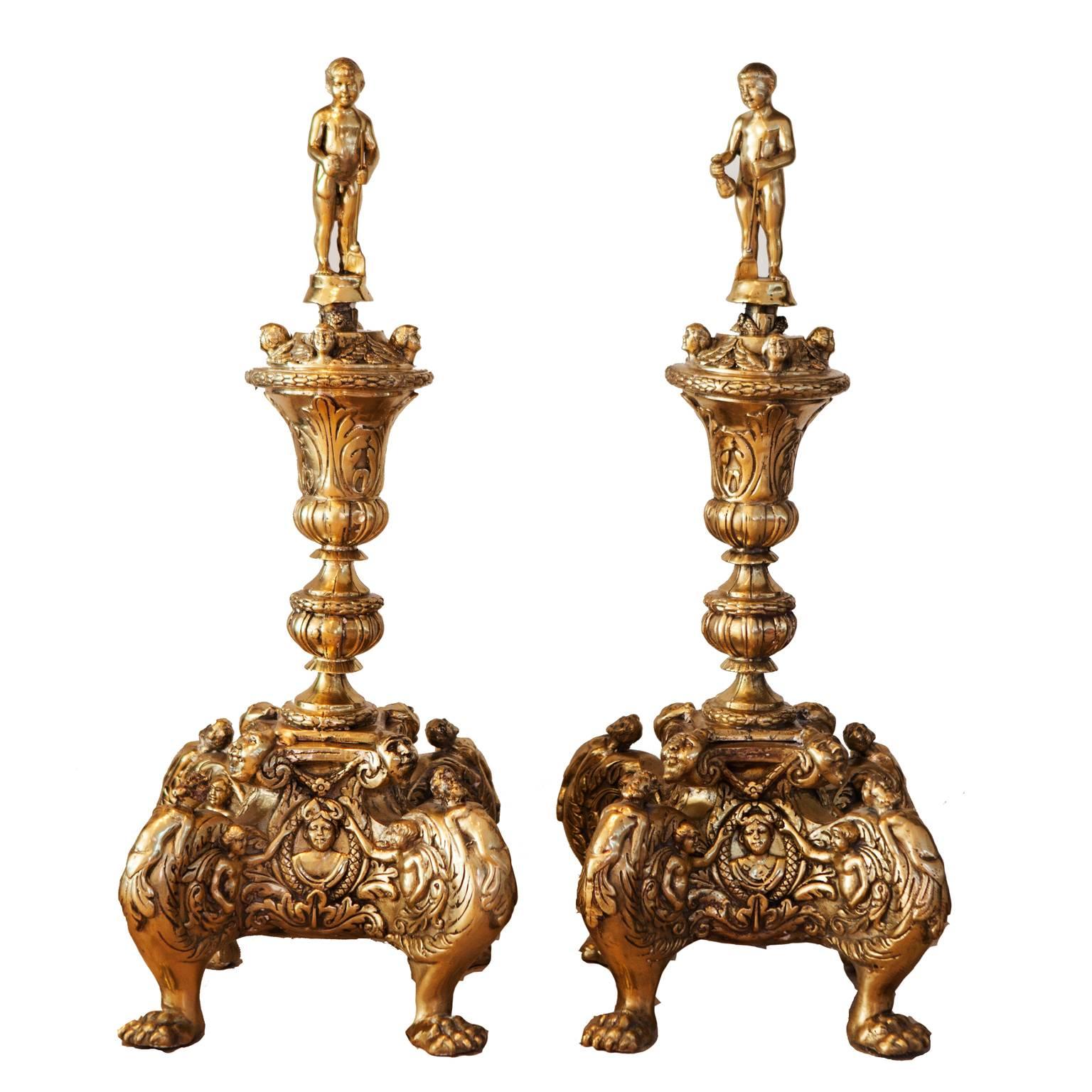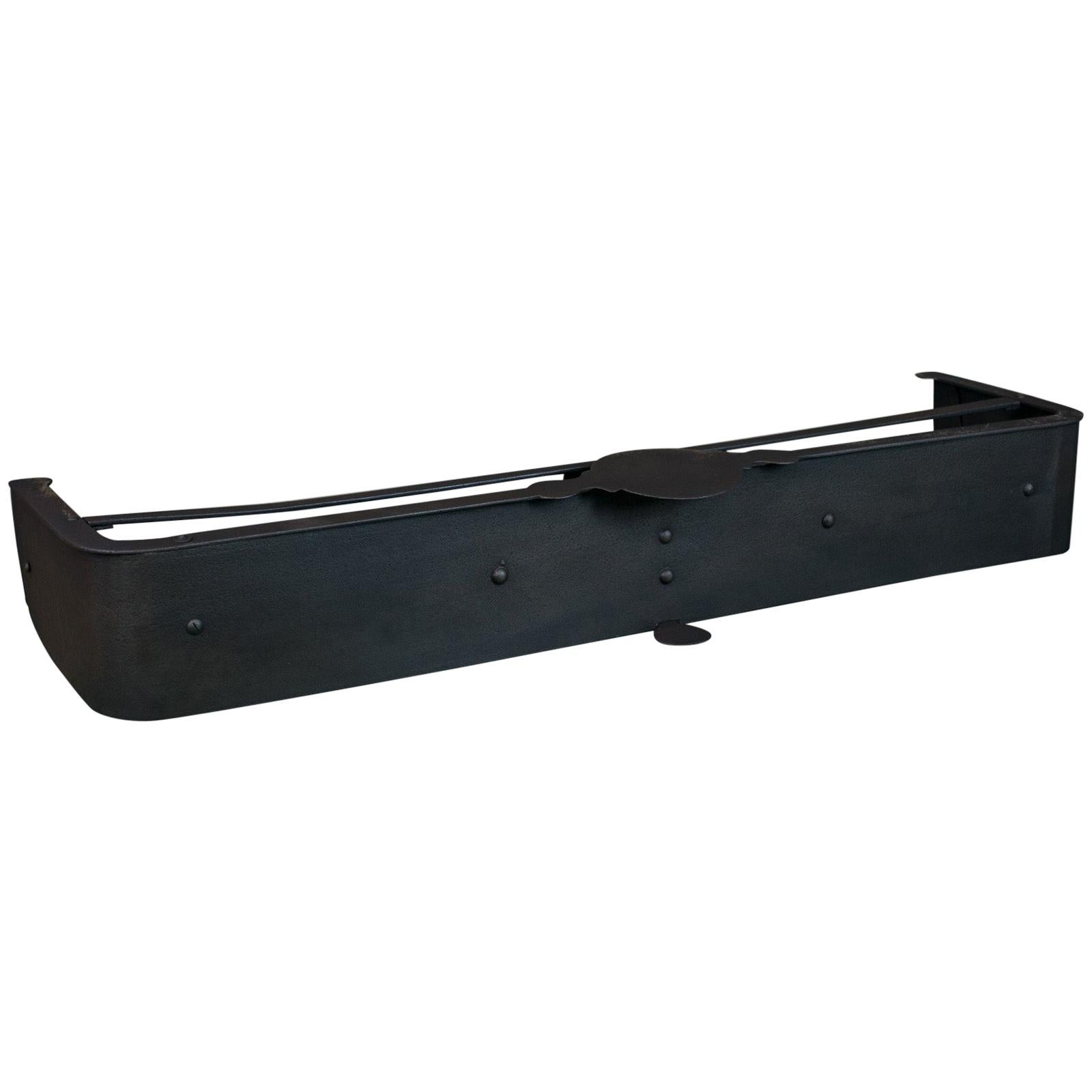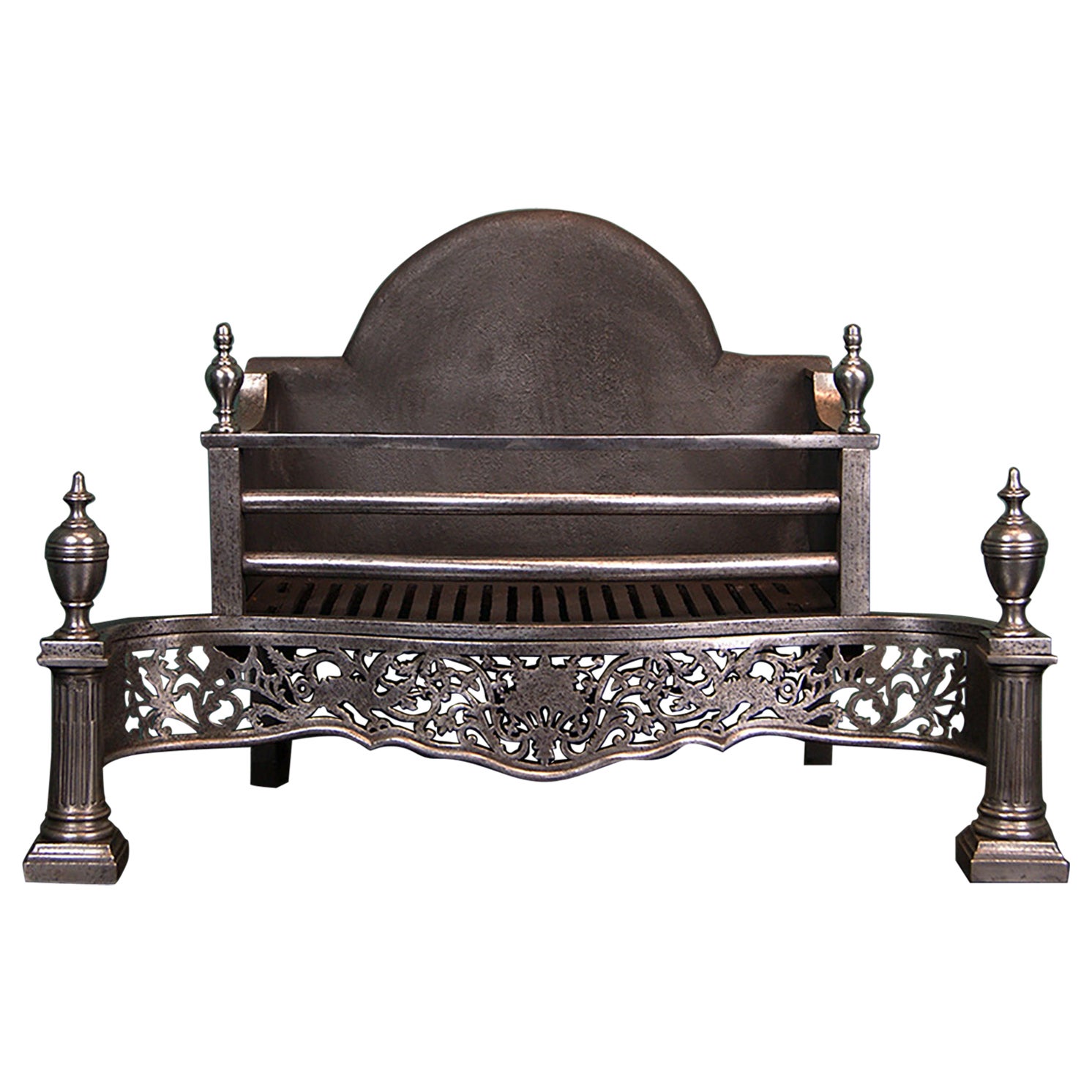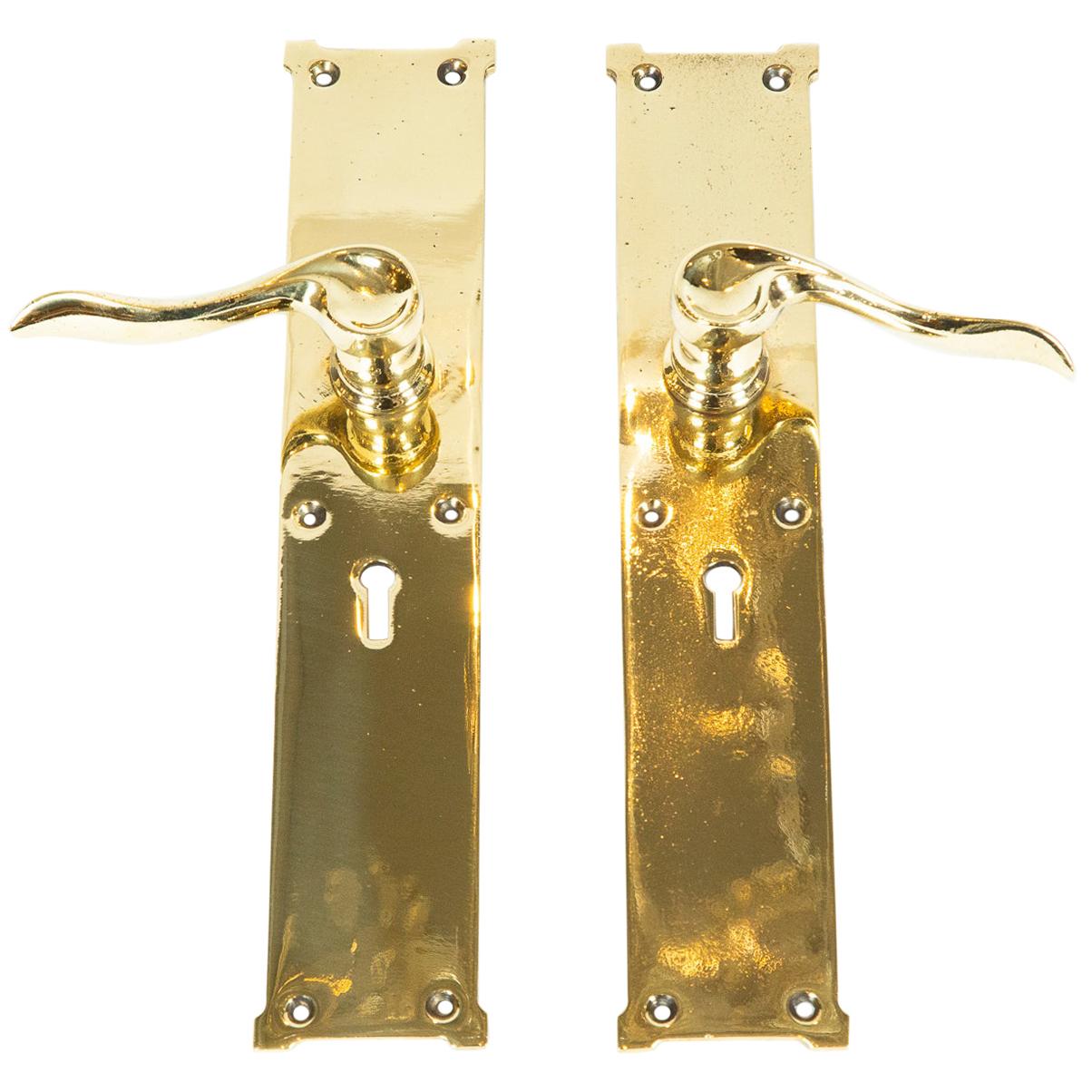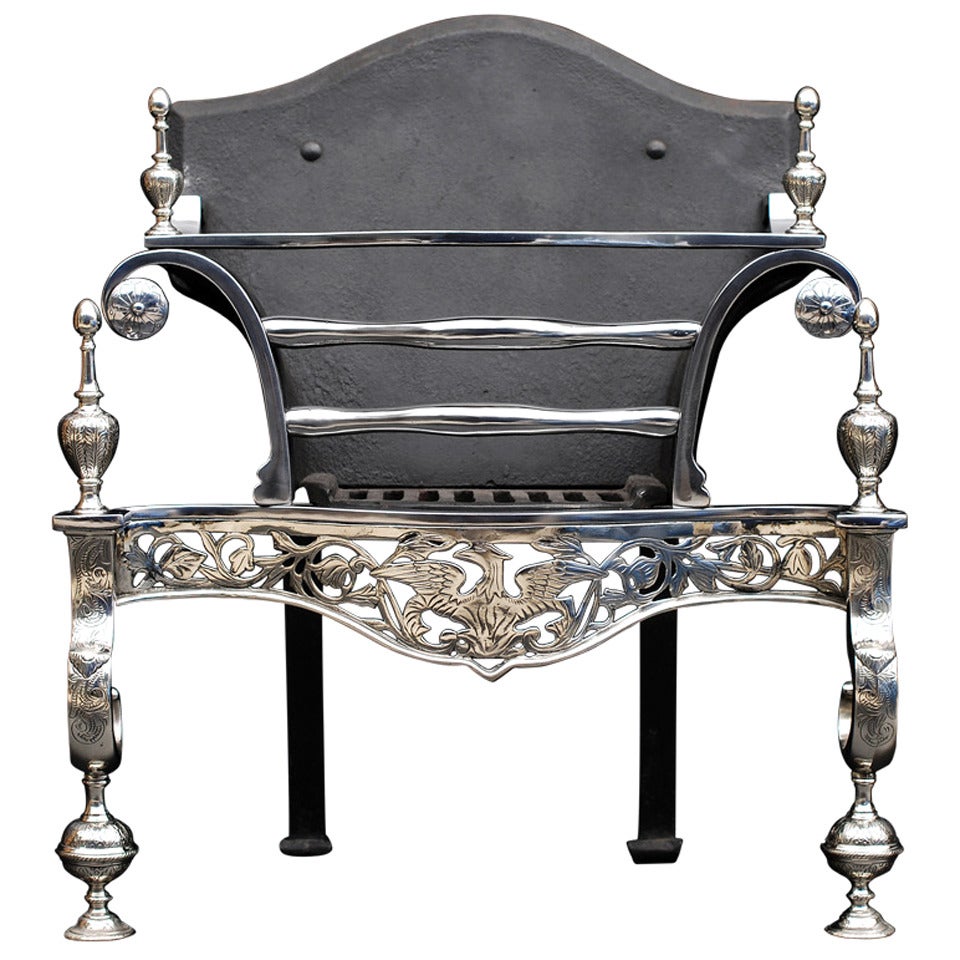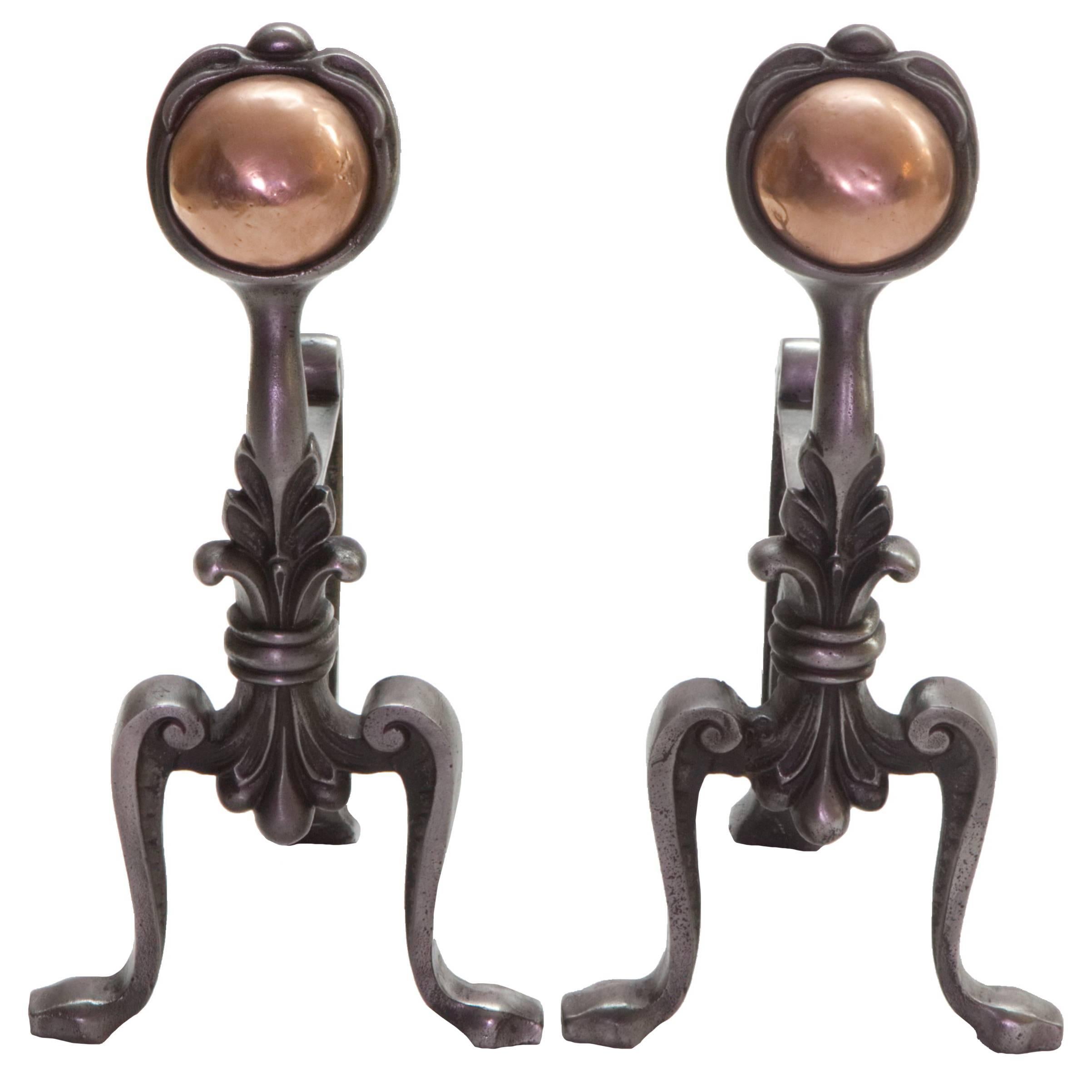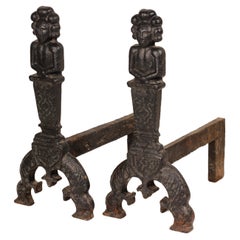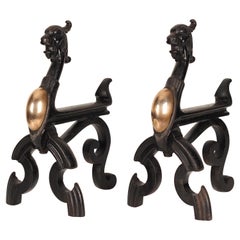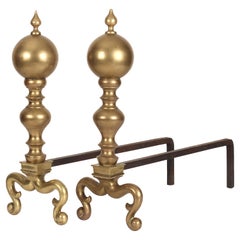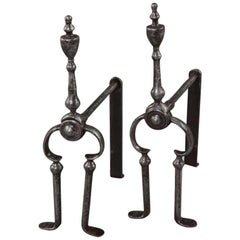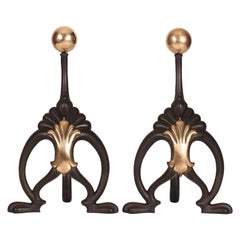
A Pair of Aesthetic Fire Dogs by the English Maker William Tonks & Sons, 1900’s
View Similar Items
Want more images or videos?
Request additional images or videos from the seller
1 of 21
A Pair of Aesthetic Fire Dogs by the English Maker William Tonks & Sons, 1900’s
About the Item
- Creator:William Tonks & Sons (Maker)
- Dimensions:Height: 13.39 in (34 cm)Width: 8.67 in (22 cm)Depth: 7.88 in (20 cm)
- Style:Art Nouveau (Of the Period)
- Materials and Techniques:
- Place of Origin:
- Period:1900-1909
- Date of Manufacture:1900s
- Condition:Wear consistent with age and use. Height of horizontal bar 17cm length 12cm.
- Seller Location:London, GB
- Reference Number:1stDibs: LU2868324065742
About the Seller
5.0
Gold Seller
These expertly vetted sellers are highly rated and consistently exceed customer expectations.
Established in 2015
1stDibs seller since 2017
169 sales on 1stDibs
Typical response time: 1 hour
More From This SellerView All
- Pair of 19th Century Victorian Gothic Iron Fire Dogs or AndironsLocated in London, GBA very large and heavy set of Victorian Gothic revival Fire dogs or Andirons made from Iron. Possibly modelled on a much earlier pair. The Victorian Gothic movement or Victorian Revi...Category
Antique 1850s English Gothic Revival Andirons
MaterialsIron
- 19th Century Victorian Gothic Fire Dogs or Andirons in the Shape of GriffinsLocated in London, GBA mid 19th century pair of zoomorphic Griffin Fire Dogs or Andirons. Made from cast Iron and with copper stomach inserts, these unusual and rare pieces are indicative of the Victoria...Category
Antique 1860s English Gothic Revival Andirons
MaterialsIron, Copper
- Pair of Victorian Late 19th / Early 20thC Brass Fire Dogs or AndironsLocated in London, GBA pair of Victorian late 19th century, early 20th century brass fire irons or Andirons, possibly produced around the time of the Aesthetic Movement with influences from Persia. A...Category
Antique 1890s English Late Victorian Andirons
MaterialsBrass, Iron
- Hand forged Victorian gothic revival fire screen/spark guard late 19th CenturyLocated in London, GBDiscover the exquisite craftsmanship of our late 19th-century hand-forged and fire-welded Victorian Gothic Revival fire screen. This stunning piece features intricate scrollwork and ...Category
Antique 1890s English Gothic Revival Fireplaces and Mantels
MaterialsMetal, Steel
- A pair of 19th Century carved Foo temple dogs or Chinese guardian LionsLocated in London, GBChinese guardian lions, or imperial guardian lions, are a traditional Chinese architectural ornament. Typically made of stone, they are also known as stone lions or shishi (石獅; shíshī). They are known in colloquial English as lion dogs or foo dogs / fu dogs. The concept, which originated and became popular in Chinese Buddhism, features a pair of highly stylized lions—often one male with a ball and one female with a cub—which were thought to protect the building from harmful spiritual influences and harmful people that might be a threat. Used in imperial Chinese palaces and tombs, the lions subsequently spread to other parts of Asia including Japan (see komainu), Korea, Philippines, Tibet, Thailand, Myanmar, Vietnam, Sri Lanka, Nepal, Cambodia, Laos, and Malaysia. There has been extensive interaction between Chinese mythology and Confucianism, Taoism, and Buddhism. Elements of pre-Han dynasty mythology such as those in Classic of Mountains and Seas were adapted into these belief systems as they developed (in the case of Taoism), or were assimilated into Chinese culture (in the case of Buddhism). Elements from the teachings and beliefs of these systems became incorporated into Chinese mythology. For example, the Taoist belief of a spiritual Paradise became incorporated into mythology as the place where immortals and deities used to dwell. Sometimes mythological and religious ideas have become widespread across China's many regions and diverse ethnic societies. In other cases, beliefs are more limited to certain social groups, for example, the veneration of white stones by the Qiang. One mythological theme that has a long history and many variations involves a shamanic world view, for example in the cases of Mongolian shamanism among the Mongols, Hmong shamanism among the Miao people, and the shamanic beliefs of the Qing dynasty from 1643 to 1912, derived from the Manchus. Politically, mythology was often used to legitimize the dynasties of China, with the founding house of a dynasty claiming a divine descent. Mythology and philosophy. Further information: Chinese philosophy True mythology is distinguished from philosophical treatises and theories. Elaborations on the Wu Xing are not really part of mythology, although belief in five elements could appear. The Hundred Schools of Thought is a phrase suggesting the diversity of philosophical thought that developed during the Warring States of China. Then, and subsequently, philosophical movements had a complicated relationship with mythology. However, as far as they influence or are influenced by mythology, divides the philosophical camps into two rough halves, a Liberal group and a Conservative group. The liberal group being associated with the idea of individuality and change, for example as seen in the mythology of divination in China, such as the mythology of the dragon horse that delivered the eight bagua diagrams to Fu Xi, and methods of individual empowerment as seen in the Yi Jing (Book of Changes). The Liberal tendency is towards individual freedom, Daoism, and Nature. The relationship of the Conservative philosophies to mythology is seen in the legendary Nine Tripod Cauldrons, mythology about the emperors and central bureaucratic governance, Confucianism, written histories, ceremonial observances, subordination of the individual to the social groups of family and state, and a fixation on stability and enduring institutions. The distinction between the Liberal and Conservative is very general, but important in Chinese thought. Contradictions can be found in the details, however these are often traditional, such as the embrace by Confucius of the philosophical aspects of the Yi Jing, and the back-and-forth about the Mandate of Heaven wherein one dynasty ends and another begins based according to accounts (some of heavily mythological) where the Way of Heaven results in change, but then a new ethical stable dynasty becomes established. Examples of this include the stories of Yi Yin, Tang of Shang and Jie of Xia or the similar fantastic stories around Duke of Zhou and King Zhou of Shang. Mythology exists in relationship with other aspects of society and culture, such as ritual. Various rituals are explained by mythology. For example, the ritual burning of mortuary banknotes (Hell Money), lighting fireworks, and so on. A good example of the relationship of Chinese mythology and ritual is the Yubu, also known as the Steps or Paces of Yu. During the course of his activities in controlling the Great Flood, Yu was supposed to have so fatigued himself that he lost all the hair from his legs and developed a serious limp. Daoist practitioners sometimes incorporate a curiously choreographed pedal locomotion into various rituals. Mythology and practice, one explains the other: in these rituals, the sacred time of Yu merges with the sacral practice of the present. Various ideas about the nature of the earth, the universe, and their relationship to each other have historically existed as either a background or a focus of mythologies. One typical view is of a square earth separated from a round sky by sky pillars (mountains, trees, or undefined). Above the sky is the realm of Heaven, often viewed of as a vast area, with many inhabitants. Often the heavenly inhabitants are thought to be of an "as above so below" nature, their lives and social arrangements being parallel to those on earth, with a hierarchical government run by a supreme emperor, many palaces and lesser dwellings, a vast bureaucracy of many functions, clerks, guards, and servants. Below was a vast under ground land, also known as Diyu, Yellow Springs, Hell, and other terms. As time progressed, the idea of an underground land in which the souls of the departed were punished for their misdeeds during life became explicit, related to developments in Daoism and Buddhism. The underground world also came to be conceived of as inhabited by a vast bureaucracy, with kings, judges, torturers, conductors of souls, minor bureaucrats, recording secretaries, similar to the structure of society in the Middle Kingdom (earthly China). Chinese temple Dogs...Category
Antique 1860s Chinese Chinese Export Sculptures and Carvings
MaterialsHardwood
- Scandinavian Modern Swedish Bowl by Carl Harry Stalhane and Maker RorstrandBy Carl-Harry Stålhane, RörstrandLocated in London, GBSwedish ceramic artist Carl-Harry Stålhane (1920- 1990) played a major role in popularizing Swedish pottery during the 20th century, working for more than three decades at Rörstrand, one of the oldest ceramics manufacturers in Europe. During his long tenure at Rörstrand, Stålhane was responsible for small-batch studio pieces, mass-produced tableware , and all manner of decorative accessories . Born in 1920 in Mariestad, Sweden, Stålhane began working at Rörstrand in 1939 as a decorative painter, assisting Danish-Finnish ceramic artist, designer, and sculptor Gunnar Nylund (1904-1997). During this time, Stålhane decorated various ceramic pieces, most notably Nylund’s Flambé range (1939s), quickly establishing himself as a talented ceramic artist. Inspired by the desire for new products during the postwar economic boom, Stålhane went from being a talented decorator to an exceptional ceramic artist. In 1943, Stålhane caught the eye of Swedish artist Isaac Grünewald (1889-1946), who was visiting Rörstrand. Grünewald was so impressed with Stålhane’s work that he took him on as a student, and from 1943 to 1946, Stålhane studied art at Grünewald's Art School in Stockholm. Subsequently from 1947 until 1948, he studied sculpture at Académie Colarossi in Paris. During the 1950s, Stålhane’s work appeared in several solo exhibitions in Sweden, the United Kingdom, and the United States. His Blanca Tableware range (c. 1955) won numerous international prizes and was in high-demand. In 1958, Stålhane succeeded Nylund as Artistic Director and Chief Designer at Rörstrand. In 1960, Stålhane unveiled a new collection at Stockholm’s Galerie Blanche. Featuring dark stoneware pieces made from local clays, this collection represented a bold departure from the soft, restrained shapes of the 1950s. It has since been praised for its precient aesthetic that would influence the look of ceramics for more than a decade. From 1963 until 1971, Stålhane taught ceramics at the Art Industrial School in Gothenburg. For a short time, he also was the Design Director at the Swedish factory Upsala Ekeby, which in addition to porcelain, produced tile, brick, and glass. Stålhane eventually left Rörstrand in 1973 in order to establish his own ceramic company, Designhuset, in Lidköping, where he further experimented with local clays and minerals. Stålhane continued to work until his death in 1990. Today, Designhuset is a school for ceramists and model-makers. Over the course of his career, Stålhane created several public works for The Commerce Trust Company in Kansas City, Missouri, and for Volvo in Gothenburg, Sweden. His work is represented at several international museums, including Stockholm’s Nationalmuseum and New York’s MoMA. Rörstrand is the second oldest brand of ceramics in Europe and can be found in homes all across Sweden and Europe. Rörstrand’s long legacy includes some of Europe’s most iconic ceramics collections including Swedish Grace, Mon Amie, Ostindia, Filippa...Category
Vintage 1950s Swedish Scandinavian Modern Ceramics
MaterialsCeramic, Stoneware, Pottery
You May Also Like
- Large Pair of Dutch Baroque Style Brass Fire DogsLocated in Cheshire, GBPair of Dutch Baroque style brass fire dogs the ball uprights with finials on bases cast with flowerheads terminating in block feet. Dimensions: Heig...Category
Early 20th Century Dutch Fireplace Tools and Chimney Pots
MaterialsBrass
- Pair of Large, Gothic, Wrought Iron Fire Dogs, Medieval Revival AndironsLocated in Hele, Devon, GBThis is a pair of large, gothic, wrought iron firedogs, medieval revival andirons forged in the 20th century. Bold andirons ideal for a large fire basket...Category
20th Century English Medieval Fireplace Tools and Chimney Pots
MaterialsIron
- George III Steel Fire DogsLocated in Lymington, HampshireAn antique pair of George III steel fire dogs. These steel fire dogs have front supports shaped like short tongs with urn and baluster finials.Category
Antique Early 1800s English George III Fireplace Tools and Chimney Pots
MaterialsSteel
- Pair of 19th Century Brass Fire Dogs Modeled as CherubsLocated in Dublin 8, IEPair of 19th Century brass fire dogs in the Louis XV style modeled as seated cherubs with outstretched arms. Each sits on a semicircular shelf with fringed and pierced drapery detail...Category
Antique Late 19th Century European Louis XV Fireplace Tools and Chimney ...
MaterialsBrass, Metal
- 19th Century Victorian Brass Fire Dogs, AndironsLocated in London, GBA pair of 19th century Victorian polished brass lion head fire dogs andirons fine detail and good casting. Dimensions: Height of dogs 17 inch ...Category
Antique 19th Century English Victorian Fireplace Tools and Chimney Pots
MaterialsBrass
- 20th Century Brass Cherub Fire Dogs, AndironsBy AcquisitionsLocated in London, GBRare pair of Limited Edition 20th century brass cherub fire dogs, Andirons Lost waxed casting with fine detail example of George II style.Category
20th Century English George II Fireplace Tools and Chimney Pots
MaterialsBrass
$1,905 / set
Recently Viewed
View AllMore Ways To Browse
Builder Hardware Furniture Hardware
Art Nouveau T Iron
Antique Fireplaces Birmingham
Copper Fireplace Insert
Tonk Manufacturing
Metal Fireplace Insert
Cast Iron Peacock
European Antique Stoves
Deco Electric Fireplace
Belle Epoque Fireplace
Antique Classical Carved Marble Plaque
English Brass Fire Grate
Dentil Mantel
Antique Greek Revival Mantel
Arts And Crafts Stone Fireplace
Carved Marble Architectural Frieze
Louis Xv Stone Fireplace Surround
Oven Door
